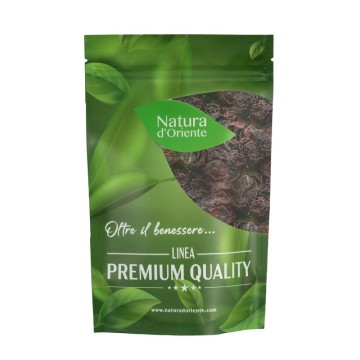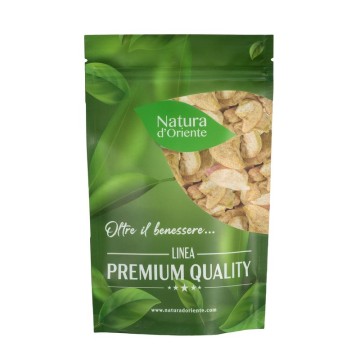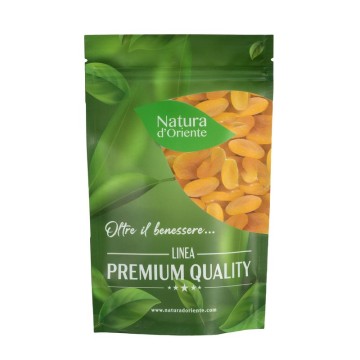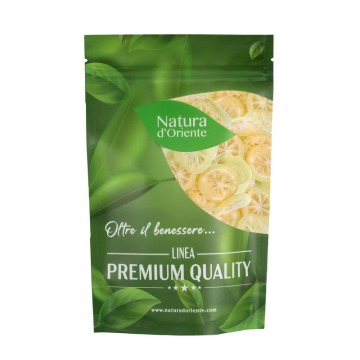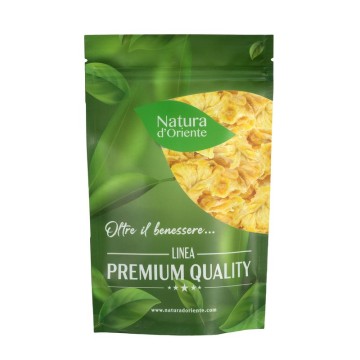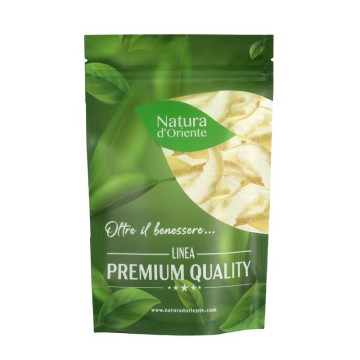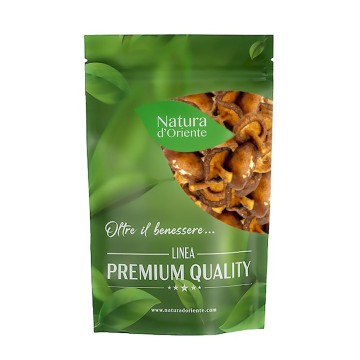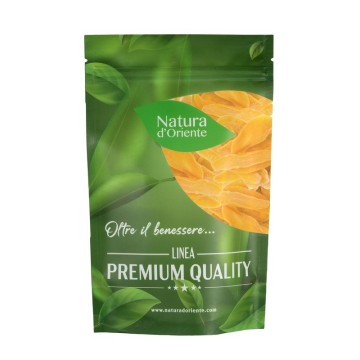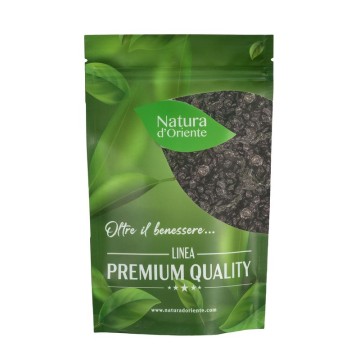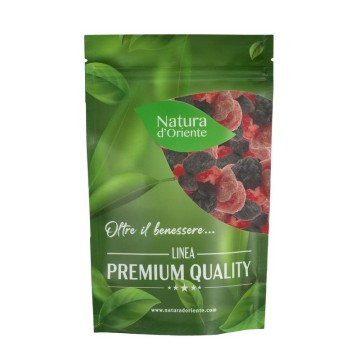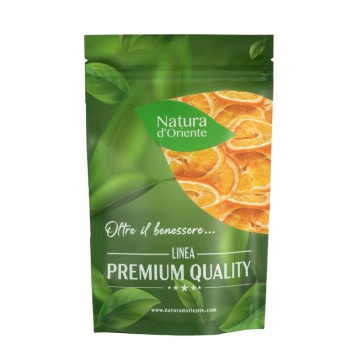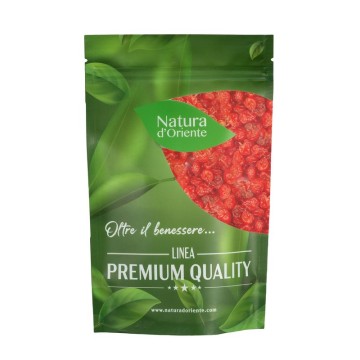Dehydrated kiwi
Eating dried kiwifruit is an idea for a delicious snack, but it is still a good way to increase the supply of beneficial nutrients for our body. This fruit has excellent levels of potassium, vitamin K and vitamin C, important minerals and ... let's see why the kiwi snack brings goodness and well-being!
Dried kiwis: properties and benefits
Choose a dried kiwi as a quick snack or ingredient, it is an excellent dried fruit option, and an excellent source of vitamins C, K and E . < / p>
Furthermore, this fruit is also a good source of potassium and folate , as well as fiber useful for restoring the natural bowel movement - against constipation.
Kiwifruit specifically contains a natural digestive enzyme known as actinidin, which can break down proteins and improve digestive function in the stomach and intestines.
We can already see from this description that dried kiwifruit is ideal for absorbing important nutrients and improving our well-being.
As a source of vitamin C, dehydrated kiwis are valid for the high percentage possessed of this substance, which increases the immune system and protects the vascular walls.
We know, in fact, that ascorbic acid also helps transform cholesterol into bile salts, expelling it from the body.
The nutrients of kiwifruit together with vitamin C are also useful for the well-being of the micro-circulatory systems, to relieve heaviness in the legs and hemorrhoids, protect the gums and promote healing.
In addition, kiwifruit has also proved very useful for the prevention of chronic fatigue, due to its bioavailability of potassium, copper, iron. These substances, all together, give the kiwi a high remineralizing characteristic, and important properties for maintaining well-being, counteracting anemia and body weakness.
The high potassium content makes it the fruit suitable for sportsmen, since it decreases the risk of cramps.
Kiwifruit is also good for the recommended intake of iron, a mineral useful for increasing the production of red blood cells. The set of minerals contained in kiwifruit helps regulate heart function and blood pressure.
In addition, the consistent presence of calcium and phosphorus has a protective action on the bones, strengthens bone density and strength in an anti-osteoporosis function.
Its taste has a refreshing action, and this facilitates the intake of the many beneficial elements, including antioxidants. Like many fruits containing vitamin C and vitamin E, it protects the body from the action of free radicals, delaying general aging. It also promotes the beauty of skin and hair, as the abundant vitamin C is an important antioxidant capable of naturally stimulating collagen synthesis.
For those looking for a diet-friendly snack to maintain weight, dehydrated kiwis are packed with nutrients and filler fiber to help keep the body full.
Origins and History of cultivation
As a plant, kiwi was born in China more than seven hundred years ago, and is immediately appreciated for its delicious taste and its sweet green pulp.
In the rest of the world it did not spread much until the nineteenth century, and in 1906 the cultivation of kiwifruit as an ornamental garden plant began in New Zealand.
It was some missionaries returning from China, who brought some climbing plants called "Chinese Gooseberries" to the island. The first to create a basis for the diffusion of the cultivation of commercial varieties, which started in the 1950s from the studies of the horticultural expert Wright.
The New Zealanders in 1959 baptized it with the name of the bird that is their national symbol: the kiwi.
The plant arrived in Italy around the seventies and has spread in different varieties, from the north to the south of the peninsula. Kiwi is considered very tasty, and a veritable mine of vitamin C, due to its rich content.
Plant and Fruit
.jpg) The delkiwi plant (Actinidia chinensis) is a tree that exists both female and male: the first produces flowers and fruits, while the second only flowers that are used to pollinate.
The delkiwi plant (Actinidia chinensis) is a tree that exists both female and male: the first produces flowers and fruits, while the second only flowers that are used to pollinate.
Growing so-called kiwi vines takes a lot of space. They can grow over 6 meters tall and should be planted about 3 to 5 meters apart.
To become productive and hardy, kiwi plants must be planted with at least one male for every six females. They often take several years to mature and the piante may not bear fruit until they are 5-9 years old.
To get hardy kiwifruit, it's important to provide a strong trellis to support them, both vertically and horizontally. A vertical support for the trunk and a wooden or wire support for the lateral branches.
The roots of the kiwifruit should be covered with a lot of clayey soil that drains well, and the soil should have a neutral or slightly acidic pH level (5-7).
The most common cultivar of kiwifruit (Actinidia deliciosa 'Hayward') yields the famous oval-shaped fruit, about the size of a hen's egg - about 6-8 centimeters in length. It has a thin, fibrous, sour brown skin and a pale green or golden pulp with rows of tiny edible black seeds. As a fruit, the kiwi has a soft consistency, a sweet and intense flavor.
Nutritional values of dehydrated Kiwi
This dehydrated fruit is low in fat, moderately low in calories and provides healthy minerals and fiber. However, it is high in sugar.
The nutritional properties of dehydrated kiwi are interesting. Contains a good dose of vitamins, minerals, folic acid and antioxidants.
Dried kiwifruit is a good choice for increasing your iron and calcium intake.
Famous is the presence of vitamin C and vitamin A. In the dried version the Kiwi contains about 370 Kcal per 100 grams. It does not contain fat (0%), but fiber (about 3 g / 100g).
It also makes available minerals such as potassium (about 600 mg / 100g), calcium (about 500 mg / 100 g), iron (about 0.70 mg / 100 g).
How to consume dehydrated Kiwi in the kitchen or as a snack
The taste of Kiwi sweet and exotic , is suitable for the preparation of food and drinks, as well as as a snack.
Being a dried-sliced fruit, it's easy to add it to a fruit and nut mix that you can take with you wherever you want. Snack dried kiwifruit can serve as a vitamin boost, and is easily stored - also perfect for making energy bars.
Dried Kiwis can be used in pastry and cooking, to create top decorations for ice cream, muffins, cupcakes or cakes. Perfect for mixing cereals and salads, they are also useful as an addition to vegetable drinks and fruit juices, yoghurt, tea and infusions.
Dehydrated Kiwis can also be used for smoothies or cocktails, to make them more special and exotic in mixing.
Dried kiwis: side effects and contraindications
There are no particular contraindications to taking Kiwi in the right doses, but we know that for some people this fruit can cause allergic reactions. Those who are allergic to kiwifruit should consider that it is the same for the dehydrated version.
As with many nuts, natural sugars are very high in dried kiwifruit. For this reason, they are not recommended for those suffering from diabetes, as they can raise blood sugar levels.
In large doses, dried kiwifruit could cause dermatitis and mouth irritations.
![]()

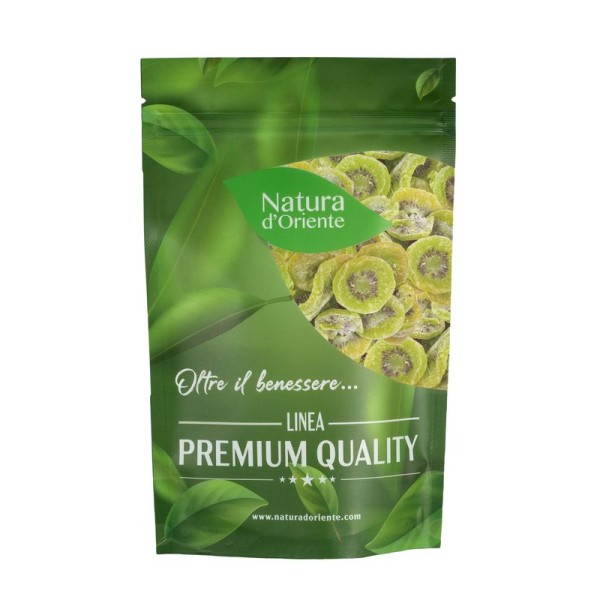









 No reward points for this product.
No reward points for this product.
.jpg) The delkiwi plant (Actinidia chinensis) is a tree that exists both female and male: the first produces flowers and fruits, while the second only flowers that are used to pollinate.
The delkiwi plant (Actinidia chinensis) is a tree that exists both female and male: the first produces flowers and fruits, while the second only flowers that are used to pollinate.
